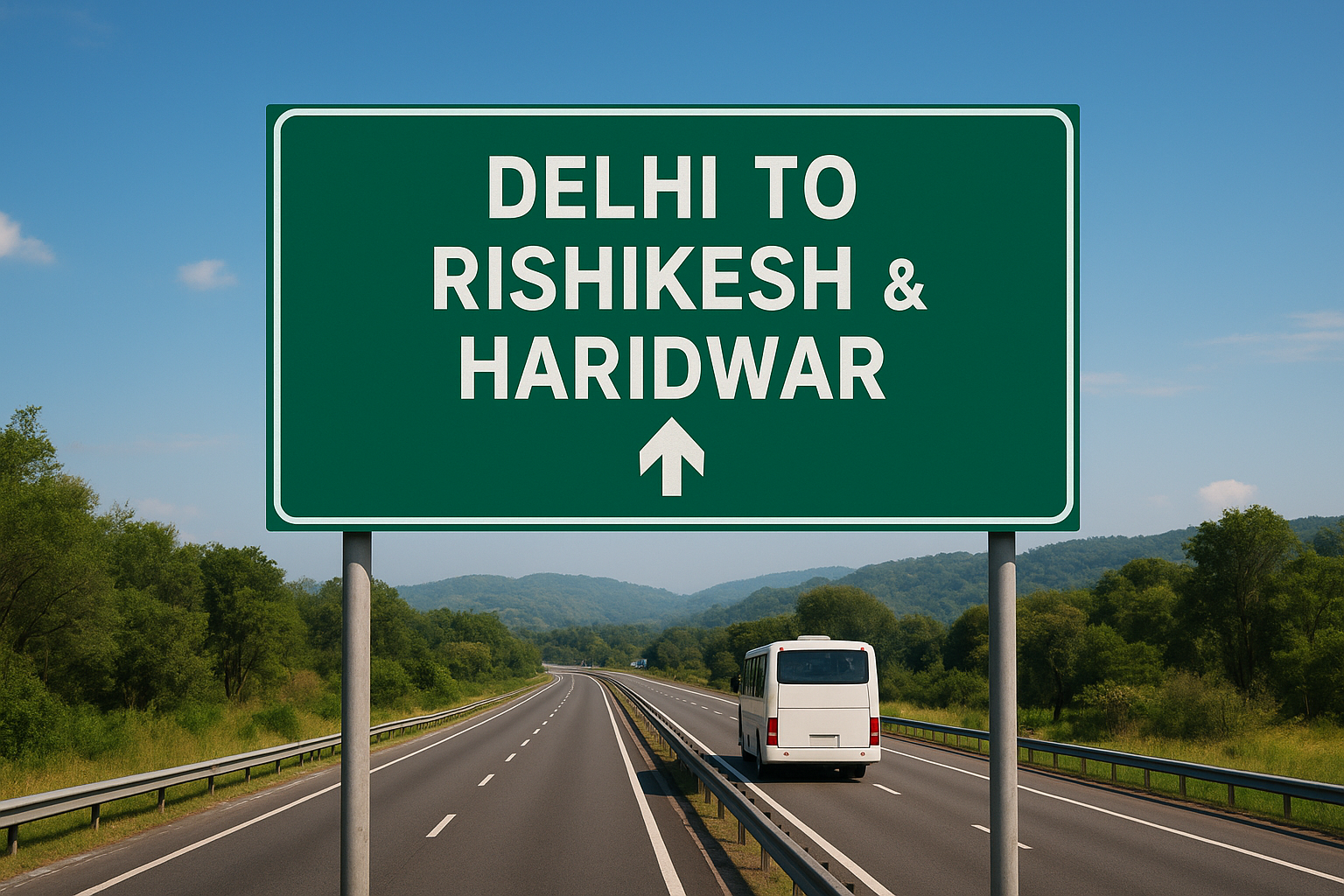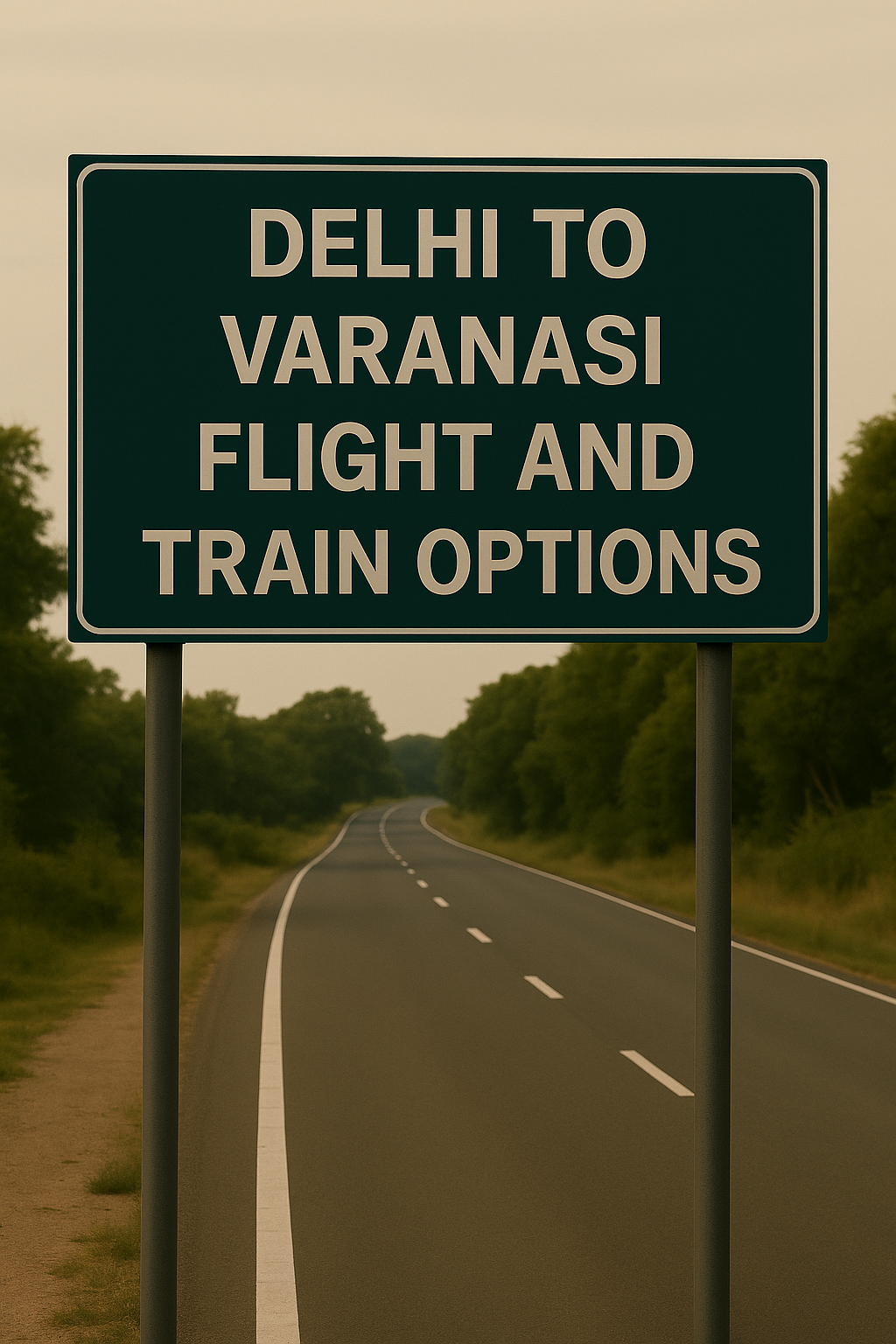Embarking on a journey from the bustling capital of Delhi to the spiritual serenity of Rishikesh and Haridwar is a classic Indian pilgrimage. Whether you seek peace by the Ganga, a yoga retreat, or the vibrant energy of the ghats, getting there is the first step.
This 2025 guide will help you navigate the best travel options—by train, bus, and car—so you can choose the perfect mode of transport for your budget and schedule.
Overview: Two Gateways to Spirituality
- Haridwar: Known as the “Gateway to God,” it’s one of the seven holiest places for Hindus. Famous for the Ganga Aarti at Har Ki Pauri.
- Rishikesh: Located about 25 km upstream from Haridwar, it’s the “Yoga Capital of the World,” known for its ashrams, adventure sports, and tranquil vibe.
Most travel options from Delhi will get you to Haridwar first, from where you can easily take a local bus or taxi to Rishikesh.
Option 1: Delhi to Haridwar/Rishikesh by Train (The Balanced Choice)
The train offers a great mix of comfort, affordability, and reliability for this journey.
- Travel Time: 4 to 6 hours to Haridwar
- Approx. Cost: ₹200 – ₹1,200 (one-way, depending on class)
- Best For: Most travelers, especially those who prefer to avoid road traffic.
Popular Trains from Delhi to Haridwar:
- Shatabdi Express: Departs from New Delhi (NDLS) in the morning, offering a fast, comfortable journey with meals included. The best option for a quick trip.
- Jan Shatabdi Express: A more economical and slightly slower version of the Shatabdi.
- Mussoorie Express & Other Mail/Express Trains: Multiple overnight and daytime options from Old Delhi (DLI) and New Delhi (NDLS) stations.
Pros:
- Scenic Route: The journey into the foothills of the Himalayas is beautiful.
- Avoids Traffic: Completely bypasses the often-congested roads.
- Comfortable: More space to relax than a bus.
Cons:
- Advance Booking: Tickets, especially for AC classes, can sell out quickly. Book on IRCTC well in advance.
- Rishikesh Access: The main railway station is in Haridwar. From there, you need a 45-minute taxi or bus ride to Rishikesh.
Option 2: Delhi to Rishikesh/Haridwar by Bus (The Direct & Budget Choice)
Buses provide a direct connection to both cities and are a very cost-effective option.
- Travel Time: 6 to 8 hours (can be longer due to traffic)
- Approx. Cost: ₹400 – ₹1,000 (one-way for Volvo/AC bus)
- Best For: Budget travelers and those who want a direct bus to Rishikesh.
Where to Catch the Bus:
Buses depart from Delhi’s Kashmere Gate ISBT, Anand Vihar ISBT, and various private operator pick-up points. AC Volvo and Sleeper buses are recommended for overnight journeys.
Pros:
- Direct to Rishikesh: Many buses go directly to Rishikesh, saving you the transfer from Haridwar.
- Cheap & Frequent: Plenty of departures throughout the day and night.
- Overnight Option: A sleeper bus can save you a day and a night’s accommodation.
Cons:
- Road Traffic: The route via NH-334 and NH-58 can be slow, especially through Muzaffarnagar and Roorkee.
- Less Comfort: Can be bumpy and less spacious than a train.
Option 3: Delhi to Rishikesh/Haridwar by Car (The Flexible Choice)
Driving gives you the ultimate freedom to explore at your own pace.
- Travel Time: 5 to 7 hours (highly traffic-dependent)
- Approx. Cost: ₹5,000 – ₹9,000+ (for a round-trip taxi, including driver and waiting)
- Best For: Families, groups, and travelers who want to make stops along the way.
The Route:
You will primarily travel via NH-334 and NH-58. The roads are decent but can have heavy truck traffic.
Pros:
- Complete Freedom: Stop for street food, visit a dhaba, or take a detour.
- Door-to-Door Service: From your Delhi hotel directly to your accommodation in Rishikesh or Haridwar.
- Comfort & Space: Ideal if you have luggage or are traveling with family.
Cons:
- Most Expensive: Especially for solo travelers.
- Traffic & Driving Stress: Navigating out of Delhi and the highway traffic can be tiring.
Quick Comparison: Delhi to Rishikesh/Haridwar Travel Options
| Mode of Transport | Approx. Travel Time | Approx. Cost (One-Way) | Best For |
|---|---|---|---|
| Train | 4 – 6 hours | ₹200 – ₹1,200 | Comfort, Scenery & Reliability |
| Bus | 6 – 8 hours | ₹400 – ₹1,000 | Direct Route & Budget Travel |
| Car | 5 – 7 hours | ₹2,500 – ₹4,500 | Flexibility & Family/Group Travel |
Essential Pilgrimage & Travel Tips
- Book in Advance: Whether it’s a train, bus, or hotel, book everything well in advance, especially during peak seasons (summer vacations, Diwali, and holidays).
- Best Time to Visit: The ideal weather is from October to March. Monsoon (July-Sept) can cause travel delays, and summers (April-June) are very hot.
- Packing Essentials: Carry modest clothing (especially for temple visits), comfortable shoes, a reusable water bottle, and any personal medication.
- Ganga Aarti: Don’t miss the famous evening Ganga Aarti—at Har Ki Pauri in Haridwar and Triveni Ghat or Parmarth Niketan in Rishikesh.
- Stay Hydrated: The climate can be deceptively dehydrating. Drink plenty of bottled water.
No matter how you travel, the journey to these sacred cities is part of the experience. The shift in energy from Delhi’s chaos to the tranquil banks of the Ganga is something you’ll feel the moment you arrive.
Wishing you a safe and spiritually enriching journey!
FAQ Section
Q1: Should I go to Haridwar or Rishikesh first?
A: It depends on your interest. Most travelers find it logical to go to Haridwar first (as it’s the main transport hub) and then proceed to Rishikesh, which is only an hour away.
Q2: Is it possible to do a day trip from Delhi to Haridwar?
A: Yes, but it will be a very long day. The best way is to take the early morning Shatabdi Express to Haridwar, spend the day sightseeing, and return on the evening Shatabdi.
Q3: What is there to do in Rishikesh besides yoga?
A: Plenty! You can try river rafting on the Ganga, bungee jumping, trekking to nearby waterfalls, attending spiritual lectures, and visiting the famous Lakshman Jhula and Ram Jhula suspension bridges.




